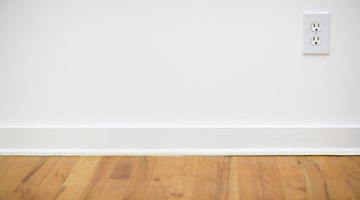How Do I Test for Water Damage in Dry Wall?
Drywall is made of porous material that can wick up and retain a considerable amount of water. Left untreated, water-damaged drywall can develop serious mold, mildew, fungus and odor problems.

In some cases it is possible to visually inspect the drywall and note water damage, and in other cases special equipment is required to test for the presence of water damage.
Visual Inspection
The first test for water-damaged drywall is an exterior, visual inspection. Look in areas where known water leakage or flooding has occurred, and if you don't know where, look for signs on the floor such as discolored carpeting, stained and warped wood and residue on concrete. Drywall with water damage may be discolored, swollen and soft to the touch.
Use Metering Equipment
In some cases it is necessary to use special metering equipment to detect water damage to drywall. Drywall can wick water up to 30 inches, and the damage may actually be worse on the inside half of the drywall, because less evaporation occurs there. One option is to use a non-invasive moisture meter to test for water damage. Place the meter in the area where you suspect water damage and emit radio waves to check for the presence of water. There will be a variation in the wave pattern in areas with water present. Also, try an infrared imaging device or camera. Take an image or picture of suspected damage areas, and evaluate the image. This works by detecting evaporation in wet walls, which makes them cooler than dry walls, and shows the reading on an infrared image. You can purchase or rent this equipment and do this yourself, or you may need to hire a restoration professional who has these tools to test for drywall water damage.
References
Writer Bio
Scott Yoder is professional SEO copywriter and editor who specializes in creating online informational marketing content. He is a graduate of the University of Oregon with a Bachelor of Arts in English. A former teacher and specialist in writing curriculum for public education, he now writes extensively about online marketing, green business, technology, legal, and medical topics.
Photo Credits
- Jupiterimages/Brand X Pictures/Getty Images
- Jupiterimages/Brand X Pictures/Getty Images
More Articles



